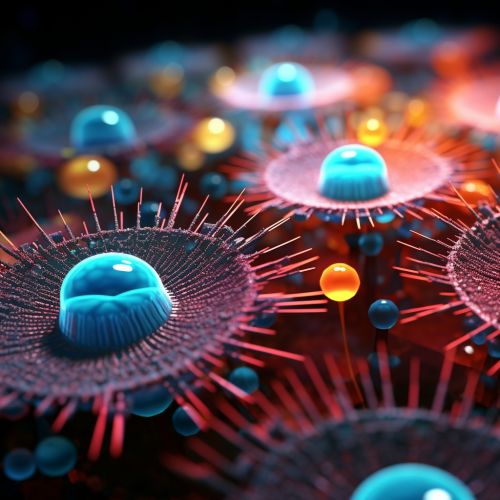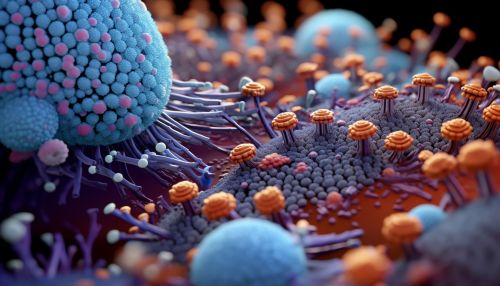The Role of Microbial Synthesis of Nanomaterials
Introduction
Microbial synthesis of nanomaterials is a rapidly evolving field within nanotechnology and microbiology, which involves the use of microorganisms to produce nanoscale materials. This process, also known as microbial nanotechnology, is a green and sustainable approach to nanomaterial synthesis, offering an eco-friendly and cost-effective alternative to traditional chemical and physical methods.
Microbial Synthesis of Nanomaterials
Microorganisms such as bacteria, fungi, yeast, and algae have the inherent ability to reduce metal ions and synthesize nanoparticles. This is due to the presence of various enzymes and proteins in these organisms that can reduce metal ions to their elemental form, leading to the formation of nanoparticles. The size, shape, and properties of these nanoparticles can be controlled by manipulating the microbial growth conditions and the type of microorganism used.


Bacterial Synthesis
Bacteria are the most commonly used microorganisms in the microbial synthesis of nanomaterials due to their high growth rate and the ease of manipulating their growth conditions. Certain bacteria such as Pseudomonas aeruginosa, Escherichia coli, and Bacillus subtilis have been extensively studied for their ability to synthesize various types of nanoparticles, including gold, silver, and magnetic nanoparticles.
Fungal Synthesis
Fungi, due to their higher metal accumulation capacity compared to bacteria, are also used for the synthesis of nanomaterials. The extracellular enzymes produced by fungi can reduce metal ions to their elemental form, leading to the formation of nanoparticles. Fungi such as Aspergillus niger and Fusarium oxysporum have been used to synthesize silver and gold nanoparticles, respectively.
Algal and Yeast Synthesis
Algae and yeast, although less commonly used than bacteria and fungi, also have the potential to synthesize nanomaterials. Certain algae and yeast species have been found to synthesize silver and gold nanoparticles under specific growth conditions.
Applications of Microbial Synthesis of Nanomaterials
The nanomaterials synthesized by microorganisms have a wide range of applications in various fields, including medicine, electronics, energy, and environmental remediation.
Medicine
In medicine, the microbial synthesis of nanomaterials has potential applications in drug delivery, imaging, and therapy. For example, gold nanoparticles synthesized by bacteria have been used as drug delivery vehicles, while silver nanoparticles synthesized by fungi have been used as antimicrobial agents.
Electronics
In the field of electronics, microbial synthesis of nanomaterials can be used to produce conductive materials for electronic devices. For instance, magnetic nanoparticles synthesized by bacteria can be used in the fabrication of magnetic memory devices.
Energy
In the energy sector, microbial synthesis of nanomaterials can contribute to the development of sustainable energy technologies. For example, silver nanoparticles synthesized by algae have been used in the fabrication of solar cells.
Environmental Remediation
Microbial synthesis of nanomaterials also has potential applications in environmental remediation. For instance, magnetic nanoparticles synthesized by bacteria can be used for the removal of heavy metals from wastewater.
Challenges and Future Directions
While microbial synthesis of nanomaterials offers numerous advantages over traditional methods, it also faces several challenges. These include the control over the size and shape of the nanoparticles, the scalability of the process, and the stability of the synthesized nanoparticles. Further research is needed to overcome these challenges and to explore the full potential of microbial nanotechnology.
Despite these challenges, the future of microbial synthesis of nanomaterials looks promising. With advances in genetic engineering and biotechnology, it is expected that the efficiency and applicability of microbial nanotechnology will significantly increase in the future.
